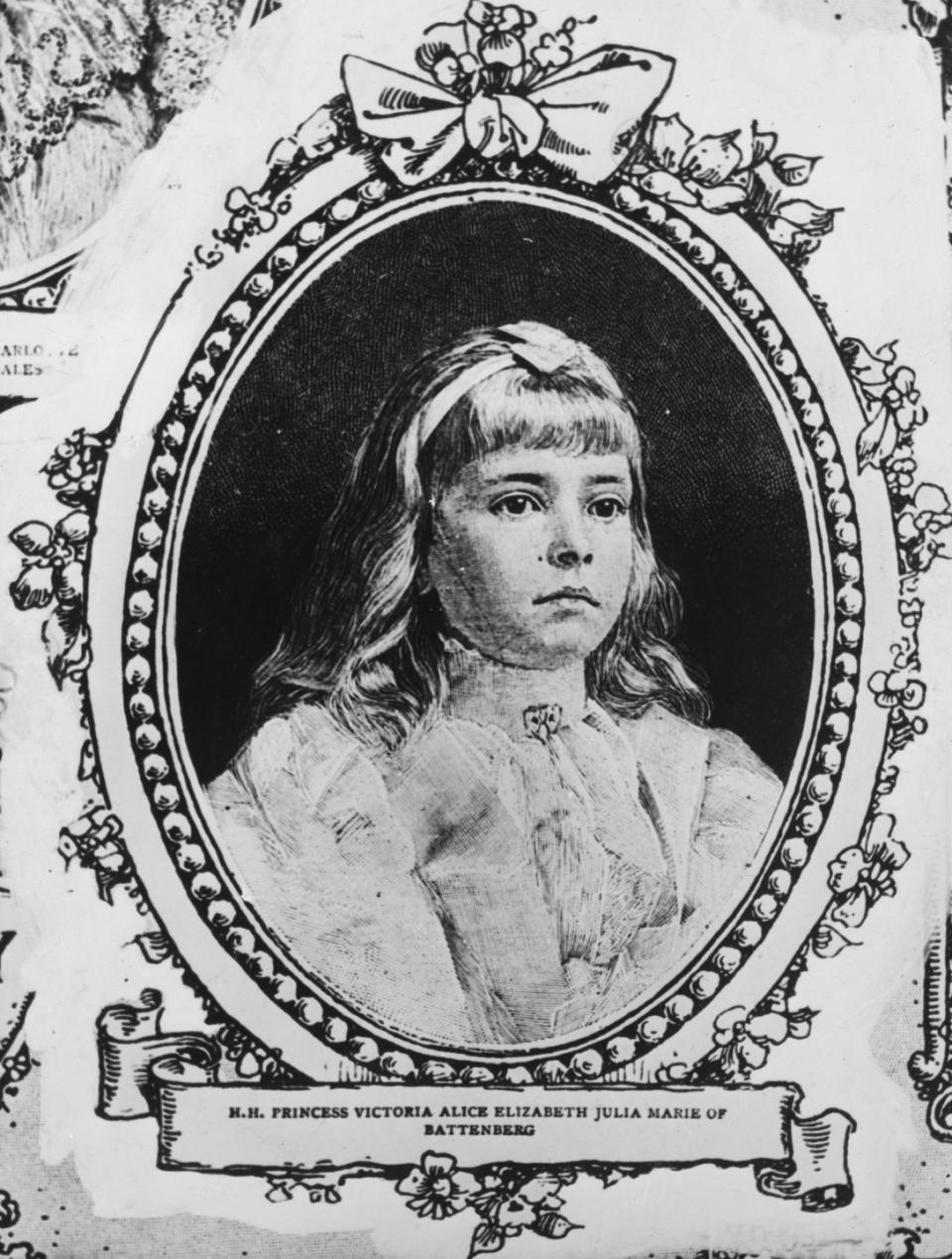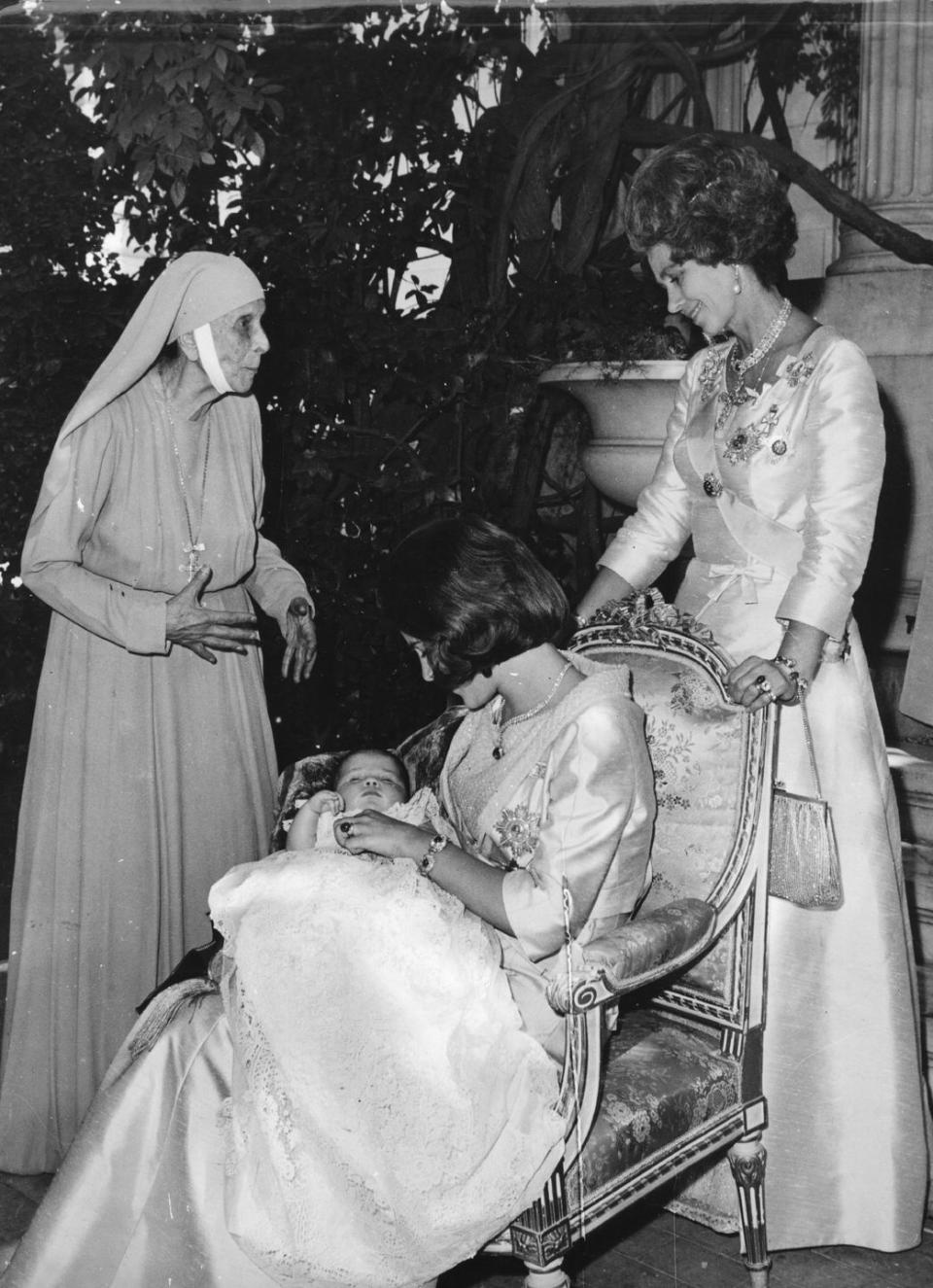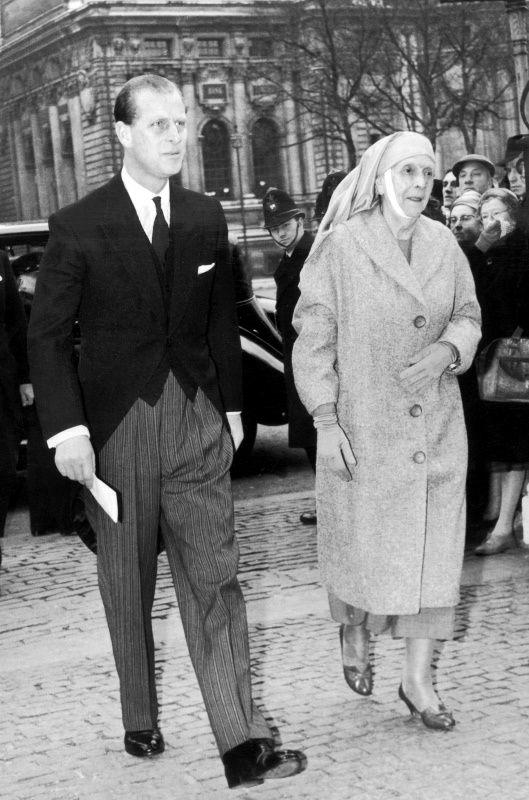How Princess Alice of Battenberg, Prince Philip's Mother, Became the Royal Family's Black Sheep

"What can you say of a nun who smokes and plays Canasta?"
That's what Princess Victoria, mother to Princess Alice of Battenberg (who later became Princess Andrew of Greece and Denmark), famously said of her daughter when she adopted a gray nun's uniform.
Throughout her long, strange life, Alice was often branded as an oddball—but one with a good heart. As Hugo Vickers, the author of Alice: Princess Andrew of Greece, told the Washington Post, "She really exemplified the best qualities of a princess, which is to look after your people in difficult times."
Here, what you should know about Queen Elizabeth's mother-in-law—and prominent figure in The Crown's third season—Princess Alice.

Her story starts in 1885.
Princess Alice was born at Windsor Castle in the presence of her great-grandmother, Queen Victoria. She was the child of Princess Victoria of Hesse and by Rhine and Prince Louis of Battenberg. The royal was deaf from birth.
In 1903, she married into the Greek royal family.
Alice wed Prince Andrew of Greece, and together, the couple had four daughters and one son.
Alice's first daughter, Princess Margarita of Greece and Denmark was born in 1905, followed soon after by Princess Theodora of Greece and Denmark in 1906, then Princess Cecilie of Greece and Denmark in 1911, and finally Princess Sophie of Greece and Denmark in 1914. Prince Philip was her youngest child, born in 1921.

The royal would live in exile twice.
Following the abdication of King Constantine I of Greece, who was forced out in 1917 due to his theoretically neutral but somewhat pro-German alliances in WWI, the Greek royals went into exile. It was during these years that Princess Alice began to find solace in religion.
After Constantine I's second son and heir, King Alexander, died, Constantine was recalled to Greece—but his reign didn't last long, and he was once again forced out in 1922. Soon after, Prince Andrew, who had been a leader in the Greek military, was found guilty (somewhat unfairly) of abandoning his duties. He was then "degraded and condemned to perpetual banishment" from Greece, per Vickers's biography, and the family's second exile began. (This is the time when Prince Philip was placed in an orange box, a fact repeatedly mentioned on The Crown.)
Princess Alice would also be shaken by the deaths of two aunts and her daughter Cecile.
Two of Alice's aunts, Tsarina Alexandra Feodorovna and Grand Duchess Elizabeth Feodorovna, married Romanov princes. After the Tsarist regime fell, Alexandra Feodorovna was killed alongside her husband, Tsar Nicholas II, and their children in 1918; Elizabeth Feodorovna was murdered the following day.
Later, as The Crown memorably depicted in season two, Alice's daughter (and Philip's sister) Cecile died in a plane crash in 1937.

She was sent to a sanatarium at the age of 45.
Alice's family first became concerned about her mental health in 1929, and in 1930, she was admitted to Dr. Ernst Simmel's clinic outside Berlin. Simmel, one of Sigmund Freud's early collaborators, diagnosed the princess as a paranoid schizophrenic.
Freud would consult on the case, and suggest that Alice's reproductive system be subjected to X-rays, so as to "accelerate the menopause," per Vickers. There is no evidence that Alice herself was consulted about this, or consented to the procedure. She would eventually discharge herself from Simmel's clinic, but her family arranged for her placement in a sanatarium soon after.
It was then that Prince Andrew, Princess Alice, and their children would stop living together as a family. Alice and Andrew saw each other for the first time since 1931 at Cecile's funeral. Afterwards, they each went their own way, to lead separate lives. A divorce was never formalized, and Andrew would die in 1944.
While the daughters quickly found husbands and new lives, Philip, the youngest, would grow up without a traditional family structure.

The princess returned to Greece in 1939, and eventually founded a sisterhood of nuns there.
She began doing charity work—"looking after the poorest people," as her mother, Princess Victoria, described it—soon after her return. During the war, she worked in soup kitchens in Athens, and tried to use her royal status to procure medical supplies for the Greek people.
In 1948, she donned a gray habit, "withdrew from the world" (her words), and retreated to the island of Tinos, where she was given some land by the Church of the Virgin. She never took vows or formally became a Greek Orthodox nun, but she would continue to wear the religious garments for the rest of her life.
She always had an eye out for the downtrodden.
She's remembered particularly fondly for sheltering a Jewish family in her Athens palace during the Nazi occupation of Greece. (This is, of course, in stark contrast to three of her daughters, who married Nazi supporters.) She reportedly cared for the Cohen family as well, spending hours at a time with them; once, she even used her deafness as an excuse to wave off the Gestapo. As Philippe Cohen, one of the family's descendants, said, "We all owe our existence to the courage of Princess Alice."
This story only surfaced relatively recently, after a relative of the Cohen's suggested a Jerusalem street be named after Princess Alice. But the late royal was never interested in being celebrated by the press. "I suspect that it never occurred to her that her action was in any way special," Prince Philip said when visiting her grave in 1994. "She was a person with deep religious faith and she would have considered it to be a totally human action to fellow human beings in distress."

In 1967, she moved in with Prince Philip and the rest of the British royals at Buckingham Palace.
After King Constantine II of Greece was overthrown, Alice's son's family whisked her away to safety in London.
Princess Alice was reportedly well-looked after, and enjoyed regular visits from friends and family, during her two-odd years at the palace. She died there in 1969.
Alice requested that she be buried in Jerusalem.
The princess was originally interred in the royal crypt in St. George's Chapel at Windsor Castle, but she had wished to be laid to rest near her aunt, Grand Duchess Elizabeth, at the convent on the Mount of Olives. Elizabeth, a Russian Orthodox saint, had also established a convent and helped the underprivileged.
After much diplomatic maneuvering, her wish was finally granted in 1988, when she was reinterred in Church of St. Mary Magdalene on the Mount of Olives. The U.K. Foreign Office advised Prince Philip not to attend, for fear a royal's visit to east Jerusalem would condone the area's occupation. In 1994, he was finally able to visit her resting place.

Prince William would eventually visit her grave in 2018.
That year, William undertook a royal tour of the Middle East, which included a stop in Jerusalem. The royal took the time to lay flowers at her gravesite.
William had previously proclaimed his admiration for Alice. In light of her declaration as Righteous Among the Nations for protecting the Cohens, the prince said, "Her story is a matter of great pride for my whole family."
You Might Also Like

